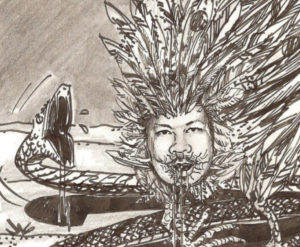
Oftentimes, the discussion on subject such as risk has a tendency to turn into something esoteric. When that happens, as a Risk Manager, we should appreciate the brilliance of some people’s individual premises, suppositions, commentaries, and conclusions, for they can add value and substance to what we already know. Pulling their takes together might just be what everyone needed to appreciate the whole.
There is an old tale about the three blind men who encountered an elephant for the first time and attempt to learn about it by touch alone. Well, now, let us change the story to the three blind project managers who encountered risk for the first time. Imagine their experiences as they attempted to learn about it.
The story about the three blind project managers is like the story of Jain’s parable of The Blind Men and the Elephant. The parable is quite relevant to what we are discussing here.
“One man felt a leg and said the elephant is like a pillar. The one who got hold of the tail said the elephant is like a rope. The one who felt the trunk said the elephant is like a tree branch; the one who feels the ear says the elephant is like a hand fan; the one who feels the belly says the elephant is like a wall; and the one who feels the tusk says the elephant is like a solid pipe.”
The understanding of each man is distinctive because each traces a different part of the elephant. This very old story teaches us something important about how we go about our business, how we run our projects. How we address the risks associated with them. We tend to see many situations differently from the next person. It is an excellent illustration of the relativity of risk.
The range of understanding runs a distance between true and false but never in absolute term. In effect, what each one of us experience might be a subjective truth and not the objective truth. This creates limitation to the accuracy of one’s decision.
This is why, we must take Covey’s HABIT 5: SEEK FIRST TO UNDERSTAND, THEN TO BE UNDERSTOOD®“ seriously. “Communicate effectively at all levels of the organization. Communication is the most important skill in life. You spend years learning how to read and write, and years learning how to speak. But what about listening?” (Covey’s 7 habits, 2019). In my experience, one of the more difficult habit to master. We all feel the need to deliver our own opinion to the table on the get-go. It’s the gravitational pull we need to be aware of in order to be successful. I, myself, failed countless time.

P. Eng., PMP, CCP, PMI-RMP, Author, Artist
Even though, my late father reminded me many times that there’s a reason why people have two ears and one mouth, my struggle goes on. The moral duty attributed to the golden ratio between the ears and the mouth (2:1) is very clear but many of us continue to use our mouth more than our ears.
This is one major reason why one ends up in frequent trouble. This is why there’s a lot of hurt in the world. Easily one of the top ten underlying reasons why good relationships die and projects fail.
You and I may feel that we have known this all along but it is still quite revealing. Each of us must listen actively to understand others’ perspectives.
Don’t hold onto your opinion just because it’s your opinion. Keep an open mind. Mull about it if you must in order to be fair. Revise your previous programming a little, and don’t presume that everything you see is true.” This is the right avenue toward continuous education by identifying, recognizing, and appreciating the differences in ideas through reflexive thought processes.
I say, the best way to understand the details is to zoom out. You have to rise above man’s field of vision. In order to understand the whole, one has to zoom in. You’ve to immerse yourself to touch it.
It seems paradoxical, but zooming out permits us to see how everything interconnects and relates. Such a move is especially true to those who are at the front end, people who deals with the details so much that they lose appreciation. Zooming in on the other hand, talks about walking the path, inspecting, and feeling the hurdles on the ground. The strategy will help bridge that pervasive gap typically brought about by talking and jumping to conclusion, without digesting the whole data set first. I tell you, it can give back the sights of the three blind project managers!
Rufran C. Frago-PM Solution Pro, We are part of the solution!
Books authored by Rufran Frago
- Risk-based Management in the World of Threats and Opportunities: A Project Controls Perspective.ISBN 978-0-9947608-0-7.Canada
- Plan to Schedule, Schedule to Plan.ISBN 978-0-9947608-2-1.Canada
- How to Create a Good Quality P50 Risk-based Baseline Schedule.ISBN 978-0-9947608-1-4.Canada
- Schedule Quantitative Risk Analysis (Traditional Method).ISBN 978-0-9947608-3-8.Canada
Come check our PMSP Products, Training, and Services!
We are always here to serve you
PM Solution Pro understand that each client requires some type of fit-for-purpose solution, a different approach tailored to achieve the objectives. We are here to help you successfully meet your goals. Buy our products, get in touch, send your query, or get a quote.
If you want more details of what we offer, call and e-mail us now.
